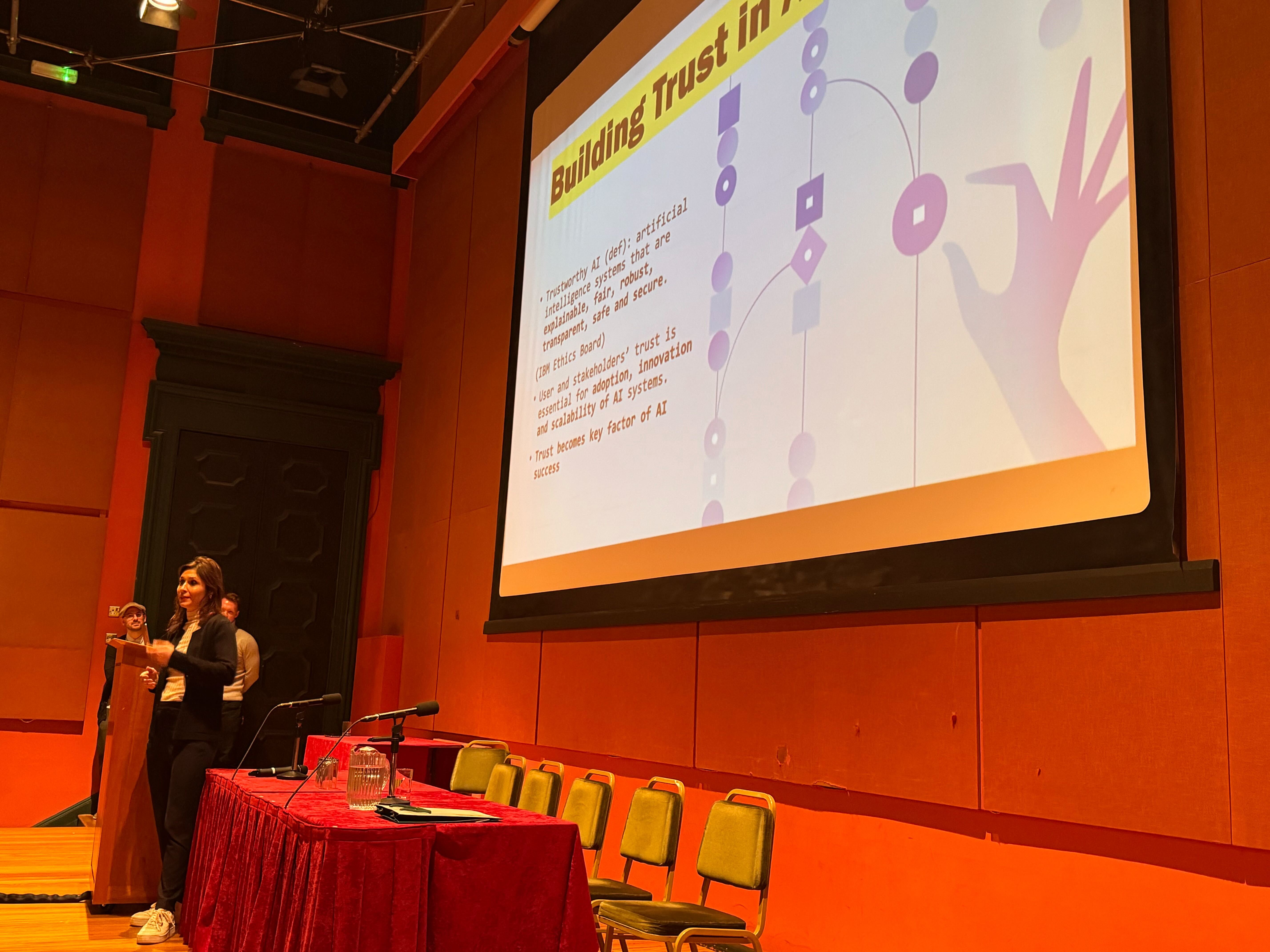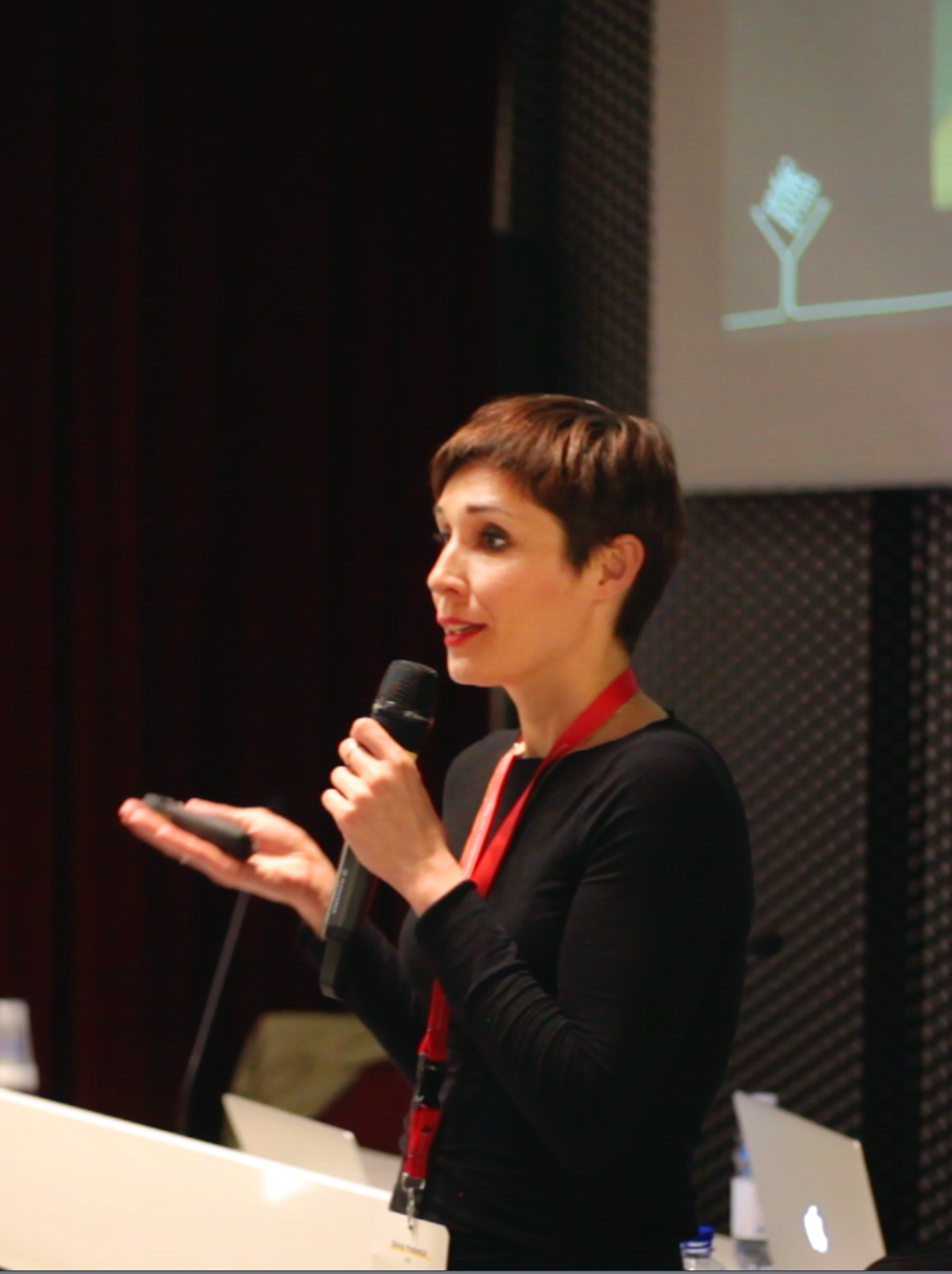Currently advisory innovation designer at IBM and implementing AI - powered digial experiences for major enterprises and public institutions.

SGAI Conference, Cambridge UK ♡
With Lars Adrian Giske (Polaris Media) and Herman Mostein (Visito) we presented our paper on the Djinn project. The paper is published by Springer.
My contribution delves into the role of Trust as a driver of adoption of AI applications and details out the design choices and thinking behind our solution.

Skills and Experience
AI and AI Governance
I drive AI implementations for major enterprises and public institutions, adding a user-focussed perspective to the development of Gen AI and traditional Machine Leraning applications. I help clients understand the implications of AI and other technologies in terms of value to use-case, expected ROI, implementative roadmap and externalities across their stakeholder ecosystem.
Business Strategy
I apply design and frameworks from classical strategy to help companies identify new means for value capture and business model innovation.
Design Thinking & Facilitation
I design solutions that address complex challenges and create value at scale for organizations and society. I facilitate innovation and strategic workshops, where I apply proven design thinking methods for successful enterprise strategyising.
UX, Service Design, UX research
In the last ten years, I´ve specialised in the design of digital experiences with a focus on users´ needs and market fit. At a micro level, this entails conceiving usable and efficient interfaces, and frictionless interactions. At a macro level, it meant structuring the broader end-to-end processes and front and back systems where these experiences reside.
User Research, both quant and qual, has been integral to these tasks throughout my experience.
How to begin an AI project
At the "Put AI to Work" event organized by IBM in Copenhagen in May 2024, I hosted a session focused on AI implementation, particularly addressing the complexities of value quantification and AI ROI.
AI implementation is increasingly critical for enterprises, and it is essential to provide investors with a clear understanding of the potential value derived from AI initiatives. This includes both tangible and intangible benefits, alongside implementation and uncertainty costs. During my presentation with my colleague Wanmeng He , I analyzed various uncertainty factors that can affect AI value estimates, drawing on recent industry and academic research.
Polaris Media
Watch Lars Giske, Halvor Brandon and myself explaining how iTrømso newsroom applied IBM AI solutios and enable new efficiencies, droving business results at scale and contributing to the mission of better investigative journalism.
What a user and data problem has to do with a 20% decline in lending to SMEs in the UK.
A newly published report by a UK´s SME Finance Taskforce highlighted how over the past decde, lending to SMEs has declined by 20% in real terms. This equals a estimated funding gap of £22billion.
"Some of that (problem) is because the data being held around these companies has become extremely complex" for financial institutions to confidently evaluate lending opportunities and promptly establish companies´ eligibility - explains Charlotte Crosswell, chair of the task force, speaking at BBCRadio4 Today´s programme, on August 1st. And as a result, sometimes lending is not offered to those companies who desperately need it. Also companies often give up on expanding their business, hiring the next person or acting upon opportunities for modernising and innovating their operations.
These are the kind of business problems that we should talk about when we talk about AI. Data accessibility, prompt information retrieval, manual processes that slow businesses down. If anything, the UK case proves how huge are social and financial costs of business as asual. It reminds us how pertinent are the notions of AI, trusted data and information access and findability - regardless how abruptly the narrative surrounding AI can change on Wall Street.

